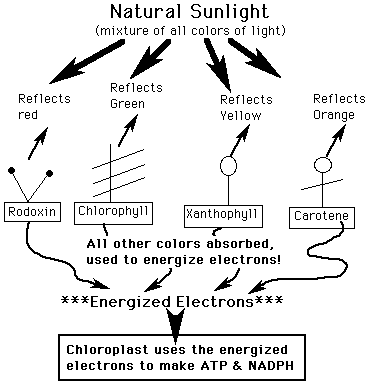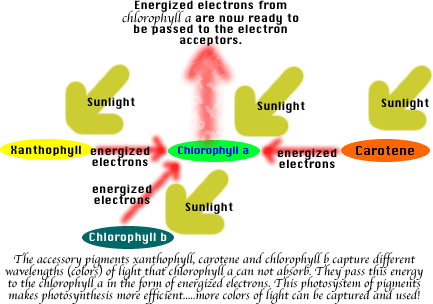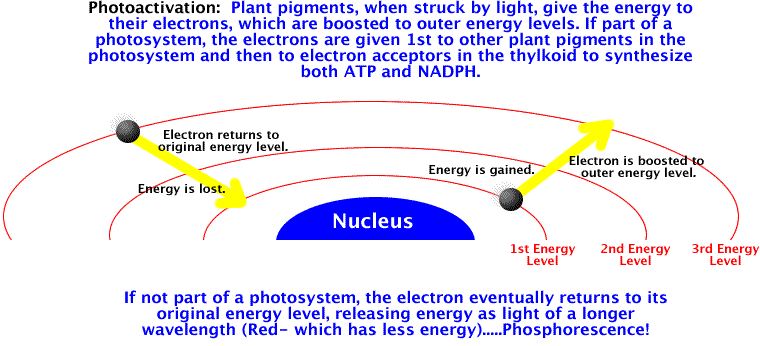

Natural sunlight is a mixture of all the colors of light.
The plant pigments are found in chloroplasts on the thylakoids.
1. Chlorophyll a: Light to medium green. Main photosynthetic pigment.
2. Chlorophyll b: Blue-green. Accessory Pigment.
3. Carotene: Orange. Accessory Pigment.
4. Xanthophyll: Yellow. Accessory Pigment.
Accessory pigments absorb other colors of light (green) that chlorophyll a can't absorb. They help boost energy absorption.
Think of plant pigments as being like TV antennas. Each type of pigment absorbs and uses a different wavelength of light (just as antennas pick up different stations). All the pigments are linked together, to give the energy they pick up to then energize electrons.


